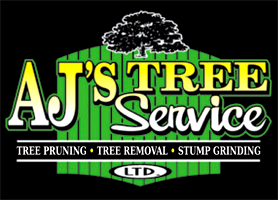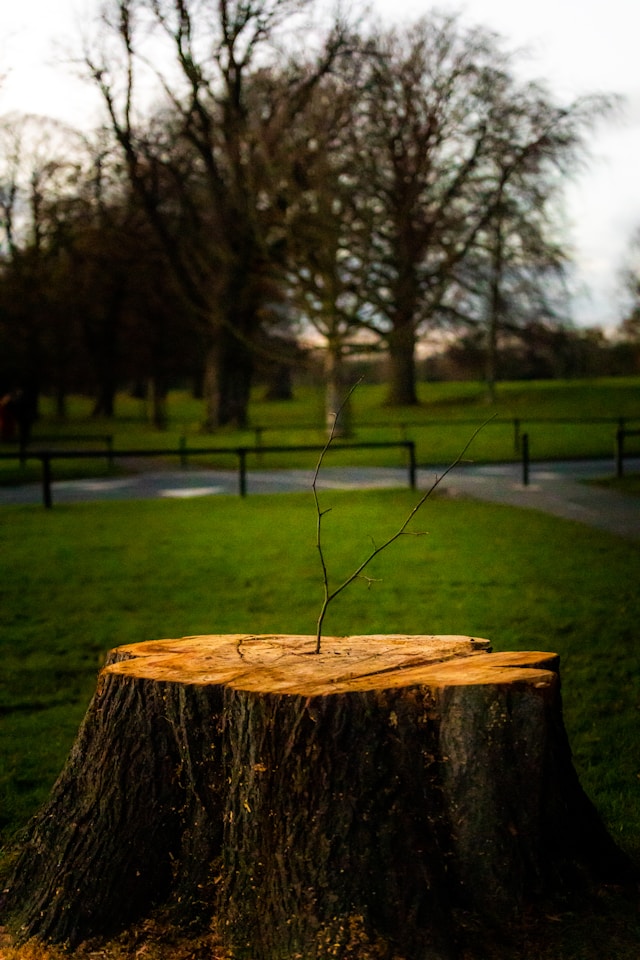Stump removal, regardless of the tree species, is a practical but intricate task requiring both skill and specific tools. A chainsaw, mattock, bow saw, ropes or chains, and protective gear like steel-toed boots and gloves rated for chainsaw resistance are important for successful and safe execution. However, methods can differ subtly depending on the tree type—a fact not all would anticipate. Equipped with vital knowledge, navigating through such complexities becomes a much smoother process. Now let’s delve into the essential gear you’d need…
Essential Equipment for Stump Removal
When it comes to removing a stubborn tree stump, having the right tools for the job is crucial. You can’t simply pluck a stump out of the ground as you would a weed from your garden. It requires planning, strength, and some specialized gear. Let’s break down each piece of equipment required and how it contributes to successful stump removal.
Chainsaw: This powerful tool serves as the main implement for cutting away at the bulk of the stump. The chainsaw’s sharp teeth allow you to make strategic cuts that weaken and dismantle the stump in sections.
Mattock: Resembling a pickaxe but with a broader blade on one side, this versatile tool is used to dig around and below the stump, making it easier to access deeply-rooted portions and break them apart.
Bow Saw: While the chainsaw handles heavy-duty work, a bow saw can trim smaller roots or branches around the base of the stump that are hard to reach with a chainsaw.
Ropes or Chains for Extraction: Once you’ve severed the main part of the stump, ropes or chains are essential for pulling it out of the ground. Attaching these to a vehicle or piece of machinery provides the necessary force for extraction.
Personal Protective Gear: Safety should always be a primary concern when engaging in stump removal. Steel-toed boots provide protection against heavy objects, while a polycarbonate face shield offers defense against wood chips and debris. Gloves rated for chainsaw resistance protect your hands, and Kevlar chaps safeguard your legs during operation.
Remember that each item serves its purpose in tandem with others, ensuring both safety and efficiency throughout the removal process. The right equipment not only makes it quicker and safer but also ensures that the job is done properly.
Related Article: Stump Grinding Process Benefits and Results
Manual Extraction Methods Across Tree Species
When it comes to removing stumps, different tree species have different root systems to consider. For deciduous trees like oak or maple, the roots are typically sturdy and widespread, making it a challenging task to remove their stumps. To extract these stumps, careful excavation around the stump and precise cutting of the roots are required. A mattock, with its combination of an ax and an adze, proves to be effective for this purpose by loosening the soil and cutting through stubborn roots tangled with rocks or other obstructions.
In contrast, trees such as pine or cedar have dense and expansive root systems. The process of manually extracting stumps from these trees will be relatively more onerous compared to deciduous trees. The trees’ root systems demand additional care and precision during the removal process due to their typically denser roots and potential resinous content. With the roots intertwined with each other, cutting them away becomes a meticulous task.
Imagine pulling out a thick, knotted rope from deep in the ground; that’s similar to the challenge posed by tree stump removal. Their interwoven roots require deliberate cutting, and special attention must be paid to potential resinous material that may ooze from severed roots.
Despite these challenges, manual extraction remains a feasible option for both types of trees, requiring physical effort and patience but rewarding in the end.
These differing characteristics emphasize the importance of adapting our approach based on the type of tree involved, ensuring the provision of appropriate care and precision specific to each tree species.
So let’s explore machinery-assisted stump removal techniques and how they provide efficient alternatives to manual extraction.
Another Related Article: Benefits of Stump Removal
Machinery-Assisted Stump Removal Techniques
When it comes to removing stubborn stumps, tree service professionals often rely on heavy-duty machinery to efficiently get the job done. One of the most commonly utilized tools for this purpose is the stump grinder—a robust machine designed to grind down both deciduous and stumps.
Stump grinders come in various sizes and models, but they all share the same basic functionality: to grind stumps and their roots below ground level. This effectively eliminates the visible portion of the stump and facilitates the natural decomposition of the remaining root system over time. Using a stump grinder not only removes the obstacle of the unsightly stump but also aids in preparing the area for future landscaping or construction endeavors.
Stump grinding is significantly faster than manual extraction methods as it swiftly reduces stumps to wood chips, allowing for swift cleanup and disposal. This method also requires less physical effort, making it particularly advantageous for large-scale stump removal projects or instances where multiple stumps need to be addressed. Additionally, unlike traditional excavation methods, stump grinding minimizes disruption to the surrounding landscape and requires minimal restoration work afterward.
Imagine having an old, unsightly stump in your yard that you’ve been wanting to get rid of for years. With a stump grinder, a task that could have taken days of grueling manual labor can now be completed in a matter of hours. The machine’s efficiency and effectiveness make it a go-to solution for quickly and thoroughly addressing unwanted stumps.
Furthermore, utilizing a stump grinder serves as a proactive measure against potential hazards associated with untreated stumps. By swiftly eliminating these obstacles, property owners can reduce the risk of trip-and-fall incidents, minimize pest infestations, and prevent regrowth from lingering root systems. Machinery-assisted stump removal techniques not only improve aesthetic appeal but also contribute to the overall safety and maintenance of outdoor spaces.
The use of machinery-assisted methods isn’t just about efficiency; it’s also about ensuring safety and the long-term preservation of your property. Now, let’s explore how these techniques offer practical solutions to common challenges associated with tree stump removal.
Stump Disposal and Environmental Care
When it comes to removing a tree stump, the process doesn’t end with its extraction from your property. The proper disposal of the extracted stump and recycling of wood chips are crucial for environmental care. Recycling the wood chips from the stump grinding process can reduce waste and repurpose materials that would otherwise go unused. These wood chips can be repurposed as mulch for garden beds, pathways, or landscaping projects, promoting sustainability and reducing the accumulation of organic waste in landfills.
In addition to recycling the wood chips, arranging for the responsible disposal of the extracted stump is equally important. Contacting local waste management services to ensure the stump is disposed of in an environmentally friendly manner minimizes its impact on the environment. By taking these steps, we contribute to a more sustainable approach to stump removal and demonstrate our commitment to caring for the environment.
Environmental care also involves adherence to local community ordinances regarding the open burning of stumps. Before considering burning as a removal method, it’s crucial to research and understand the regulations pertaining to open burning in your area. This helps prevent unintentional violations and emphasizes respect for local environmental guidelines, ensuring that our actions do not cause harm to our surroundings.
Encouraging our users to visit our website for more tips on environmentally friendly stump removal methods and proper disposal techniques is an essential part of promoting responsible environmental care.
Opting for environmentally friendly removal methods whenever possible plays a significant role in mitigating the environmental impact of stump removal. Prioritizing methods such as natural decay, grubbing, or using environmentally safe chemical applications contributes to preserving the natural balance of our ecosystem without compromising our need for effective stump removal techniques.
Our commitment to sustainable practices extends beyond providing information; it involves actively encouraging users to adopt environmentally friendly approaches to stump removal. Empowering individuals with knowledge about environmentally safe methods fosters a culture of environmental consciousness, allowing us to make a positive impact through collective responsibility.
As we continue to promote responsible environmental care in stump removal, let’s emphasize the importance of working together towards sustainable practices for a greener future.
For further information and expert assistance on environmentally friendly stump removal methods, contact AJ’s Tree Service.

